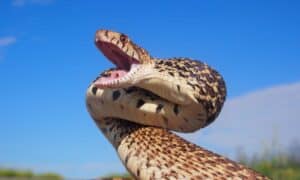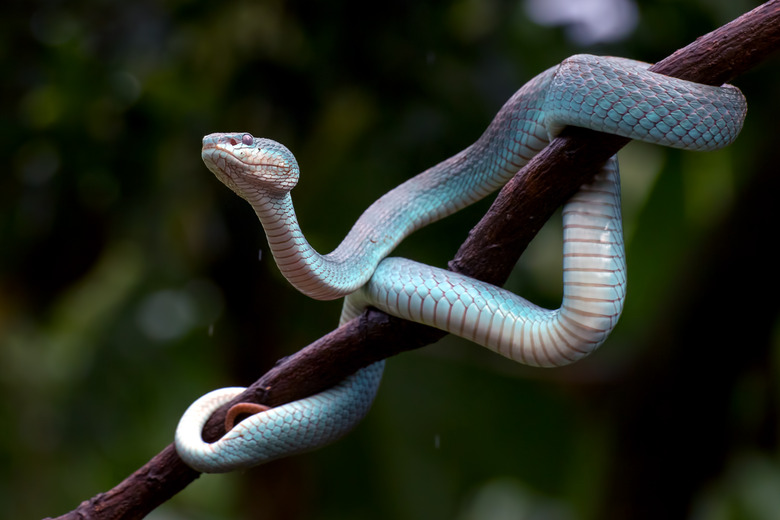Introduction
The Tasmanian tiger serpent, scientifically referred to as Notechis scutatus, is just one of Australia's the majority of appealing reptiles. Located mostly in Tasmania and its surrounding islands, this serpent has amassed attention not only for its striking look however additionally for its complicated actions and important role in the ecological community. This post will certainly check out the different aspects of the Tasmanian tiger common death adder snake's environment, habits, makeup, and communications with people while offering vital information about precaution in situation of a serpent bite.
Whether you're a researcher, a wild animals lover, or just somebody interested regarding these interesting animals, this thorough guide guarantees to supply eastern small eyed snake understandings that are both useful and interesting. So allow's start this journey to understand the Tasmanian tiger serpent better!
The Tasmanian Tiger Serpent: An Overview
Physical Characteristics of the Tasmanian Tiger Snake
Tiger snakes are defined by their distinct pigmentation and patterns. They commonly exhibit a mix of yellow or lotion red stripes on a dark brown or black history-- therefore the name "tiger." Grown-up tiger snakes can mature to approximately 2.1 meters long, although the majority of people average around 1.5 meters.
Key Features:
- Coloration: Differs from dark brown to olive eco-friendly with lighter bands. Size: Grownups generally range from 1.2 to 2.1 meters. Head Shape: Clearly wide with prominent eyes.
Distribution and Habitat of the Tasmanian Tiger Snake
The Tasmanian tiger snake predominantly inhabits coastal regions, wetlands, marshes, and grasslands in Tasmania. It thrives in settings where it can easily access water resources considering that it is usually located near streams or lakes.
Habitat Preferences:
- Wetlands: Suitable for hunting target like frogs and tiny mammals. Coastal Locations: Offers bountiful food resources. Grasslands: Gives cover and basking spots.
Understanding Tiger Snake Behavior
Feeding Routines of the Tasmanian Tiger Snake
Tiger snakes are carnivorous and opportunistic feeders. Their diet is composed mainly of frogs, fish, small animals, and birds. They rely on their eager sight and swift movements for hunting.
Dietary Breakdown:
- Frogs: A primary element due to wealth in marsh habitats. Fish: Frequently captured when swimming in superficial waters. Small Animals: Periodically take advantage of rodents.
Breeding Actions of the Tasmanian Tiger Snake
Tiger serpents have a remarkable reproductive cycle. Mating generally occurs in spring after emerging from hibernation. Women tiger snakes bring to life live young as opposed to laying eggs, which is somewhat one-of-a-kind amongst reptiles.
Reproductive Cycle:
- Mating Season: Springtime (September to November). Gestation Period: Approximately 3 months. Litter Size: Ranges from 20 to 40 baby tiger snakes.
Aggression and Defense Mechanisms of the Tasmanian Tiger Snake
Though they can be hostile when threatened, tiger serpents often prefer to pull back as opposed to challenge threat directly. Their key defense reaction include attacking when cornered or displaying their size through hissing.
Defensive Approaches:
- Hissing Sound: A caution signal suggesting distress. Bite Feedback: A last option when getaway choices are limited.
Are Tiger Snakes Venomous? Recognizing Their Venom
Venom Composition and Effects
Yes! The Tasmanian tiger serpent is venomous. Its poison has neurotoxins that can cause serious injury or perhaps fatality if left neglected. The results of a bite can consist of paralysis, swelling at the bite website, nausea or vomiting, and various other systemic symptoms.

Venom Qualities:

- Neurotoxic Elements: Impact nervous system functioning. Hemotoxic Impacts: Can lead to tissue damage.
Common Symptoms Complying with a Tiger Snake Bite
Recognizing signs quickly is vital for effective first aid administration after a serpent bite:
- Severe discomfort at bite site Swelling Nausea or vomiting Difficulty breathing
First Aid for Snake Bites: What You Required to Know
Immediate Tips After a Tiger Serpent Bite
In situation you encounter a circumstance involving a tiger serpent bite, it's vital to act quickly:
Call emergency services immediately. Keep the impacted arm or leg debilitated in mind level. Remove tight garments or precious jewelry around the bite site.Creating Your Serpent Bite Emergency Treatment Kit
Having an effectively stocked emergency treatment set can make all the difference throughout emergencies:|Product|Objective|| ------|---------|| Compression plaster|To incapacitate limb|| Splint|To support injured location|| Antiseptic wipes|For cleaning wounds|
FAQs Concerning the Tasmanian Tiger Snake
What do infant tiger snakes eat?
Baby tiger snakes mainly eat little bugs and amphibians until they grow huge enough to quest larger target like frogs or small fish.
How harmful is a tiger snake bite?
A tiger serpent bite can be extremely hazardous because of its potent poison; immediate medical interest is First aid for snake bite important for survival.
Where are eastern tiger snakes found?
Eastern tiger snakes populate seaside regions across southeastern Australia but are less common than their Tasmanian counterparts.
What ought to I do if I see a tiger snake?
Maintain your range; do not try to handle it unless you're trained to do so-- most bites occur throughout efforts at capture or mishandling.
Can I make it through without antivenom after being bitten?
While some individuals might survive without antivenom depending on numerous variables such as wellness problems and time considered therapy; looking for prompt clinical help is always suggested as it dramatically increases survival chances.
Are there any details precaution I need to take while hiking in Tasmania?
Always put on durable boots, stay on marked tracks, stay clear of tall lawn where presence may be restricted; acquaint on your own with local wild animals before heading out right into nature!
Conclusion
The Tajamanian tiger serpent represents an essential part of Australia's abundant biodiversity landscape both ecologically as killers and culturally as icons within Australian folklore. Recognizing their environment choices along with habits offers insight right into just how we can exist together securely while appreciating wildlife boundaries-- keeping in mind that understanding leads us towards safer adventures outdoors!
By staying notified about prospective threats such as envenomation from bites while also taking preventive measures makes certain favorable experiences when experiencing these interesting animals!
In final thought, whether you're captivated by their striking appearance or captivated by their complicated actions-- the Tasmanian tiger snake definitely is entitled to recognition beyond simple attraction-- it envelops nature's appeal intertwined elaborately within our ecosystems!